FINANCIAL
HIGHLIGHTS
| Financial Year Ended | |||||
|---|---|---|---|---|---|
| 2021 | 2022 | 2023 | 2024 | 2025 | |
| REVENUE (RM’ 000) | 873,681 | 1,147,645 | 1,445,358 | 1,497,400 | 1,480,549 |
| PROFIT BEFORE TAX (RM’ 000) | 81,848 | 100,451 | 114,971 | 143,809 | 115,419 |
| PROFIT FOR THE YEAR (RM’ 000) | 59,699 | 75,455 | 88,849 | 108,581 | 91,921 |
| BASIC EARNINGS PER SHARE (Sen)* | 11.04 | 13.94 | 16.41 | 19.53 | 13.58 |
| DILUTED EARNINGS PER SHARE (Sen)* | 11.04 | 13.94 | 16.41 | 19.53 | 13.58 |
* Adjusted to reflect the bonus issue which was completed on 3 March 2022.
REVENUE
(RM’ 000)
PROFIT BEFORE TAX
(RM’ 000)
PROFIT FOR THE YEAR
(RM’ 000)
BASIC EARNINGS PER SHARE
(Sen)
| Financial Year Ended | |||||
|---|---|---|---|---|---|
| 2021 | 2022 | 2023 | 2024 | 2025 | |
| DIVIDEND PER SHARE (Sen)* | 2.76 | 3.50 | 2.50 | 3.30 | 2.80 |
| CASH AND CASH EQUIVALENTS (RM’ 000) | 16,107 | 31,063 | 21,045 | 36,244 | 27,982 |
| NET ASSETS PER SHARE (RM)* | 1.16 | 1.28 | 1.50 | 2.12 | 2.11 |
| RETURN ON EQUITY (%) | 9.7 | 11.4 | 11.8 | 9.7 | 6.4 |
* Adjusted to reflect the bonus issue which was completed on 3 March 2022.
DIVIDEND PER SHARE
(Sen)
CASH AND CASH EQUIVALENTS
(RM’ 000)
NET ASSETS PER SHARE
(RM)
RETURN ON EQUITY
(%)
MANAGEMENT DISCUSSION
AND ANALYSIS
FINANCIAL PERFORMANCE OVERVIEW
Business Segment Review
Aerospace
Equipment
Group Performance
FINANCIAL POSITION
TOTAL ASSETS
CAPITAL EMPLOYED AND SOURCE OF FUNDS
CAPITAL EXPENDITURE
The Group invested RM70.2 million in FY2025 to support long-term growth, primarily for the expansion in Thailand.
BANKING FACILITIES
As at 31 March 2025, the Group had utilised RM261.4 million, representing 31.4% of available banking facilities.
DEBT RATIO
Net Gearing and Interest Coverage Ratio
CASH FLOWS
Operating Activities
Investing Activities
Financing Activities
DIVIDEND

CUSTOMERS AND PROGRAMS
Aerospace
Equipment
OPERATION INITIATIVES
Aerospace
Equipment
OUTLOOK
Aerospace
2 2018 delivery rates were used for the comparison as it best reflects the delivery rates pre-pandemic.
Custome
Equipment
CONTENTS
PERFORMANCE REVIEW
SUSTAINABILITY


